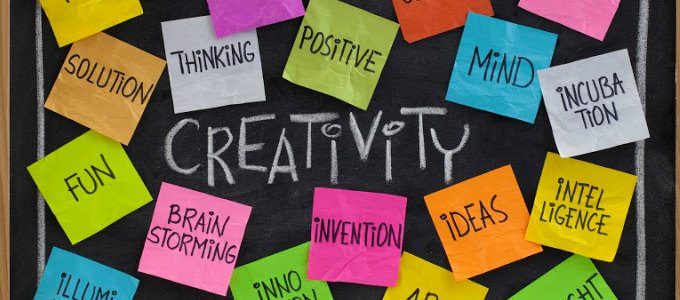As a self-declared artistic type, I always resented the idea that someone could assign a rating or ranking to my creativity. This image pops into my head of William Shakespeare, F. Scott Fitzgerald and J.K. Rowling being herded into one of those police interrogation rooms and tested to see how they compare.
“Sorry, F. Scott, but Willie and Jo made up words for their work; you just came up with the ‘Old Sport’ endearment for ‘The Great Gatsby.’”
In fact, I’ve been so adverse to the idea that I wasn’t even aware that psychologists started researching how to measure creativity more than 50 years ago, not in the recent era of scoring everything like it’s a standardized test — which it often is, especially for students.
I was also not aware that measuring creativity using psychological research can actually benefit an organization’s talent strategy and development practices. Farzad Eskafi, co-founder and CEO of assessment service organization Sparcit, built his business around this idea.
He told me this half-century of research has contributed to a creativity measurement based on three abilities:
- Fluency: “If I give you a creative prompt, like a word association, how many ideas can you come up with?”
- Flexibility: “Out of the responses you give me, how different are they from each other?”
- Originality: “Out of the responses you give me, how different are they from what everyone else gives me?”
How someone scores on each of the three can identify what functions they could perform best. Employees with high fluency and flexibility, which often go hand-in-hand, tend to be problem solvers who can adapt quickly. Those with higher originality are better at creating trademarks and processes for organizations.
Eskafi said organizations have to have people with all abilities. This doesn’t mean go out and find talent who are strong in all three — that’s extremely difficult because most people skew one way or another, he said. Instead, balance out the fluid-flexibles with the originals. For example, Eskafi said he scores low in originality, but his co-founder doesn’t, and that places them in different but equally needed positions.
“(Creativity measurement) is also a great thing for leadership training,” Eskafi said. “Make sure that leaders are flexible and adaptable to changes as needed. Their job is to listen to 20 different ideas and chose the one they believe is the right one. You have to be very flexible to be able to do that.”

Not only is keeping types of creativity in check good for organizational functions and leadership development, but also it’s good for the bottom line. A 2014 study by Adobe and Forrester found companies that foster creativity are 3.5 times more likely to achieve 10 percent revenue growth than their noncreative competitors.
With some reservation, I allowed myself to be measured. After five word association exercises — Eskafi said not to do more than that because the brain gets tired — I found out I score decently on all three, but highest in flexibility and identically equal amounts in fluency and originality. I’ll have to get back to Eskafi on whether that makes me a really adaptable leader-creator or just a freak of creative nature.
I still have one question, though: How would Shakespeare, Fitzgerald or Rowling compare?











